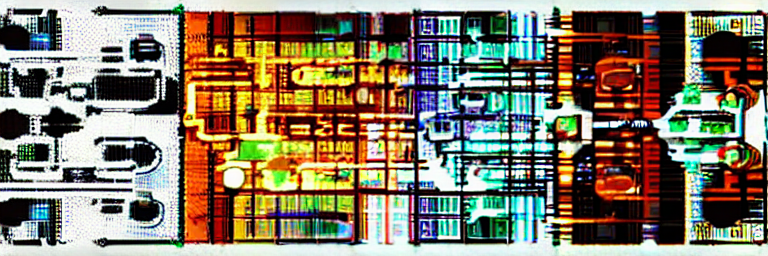A multi-agent system (MAS) refers to a system composed of multiple autonomous agents that interact and cooperate with each other to achieve certain goals or solve complex problems. Each agent within the system has its own goals, knowledge, and capabilities, and can perceive its environment and take actions based on that perception.
Introduction to Multi-Agent Systems
In a multi-agent system, agents can communicate with each other, exchange information, coordinate their actions, and collaborate towards achieving shared objectives. The agents may have different roles, responsibilities, or expertise, and they can exhibit varying levels of intelligence or decision-making abilities.
They find applications in various domains, such as robotics, artificial intelligence, economics, transportation, healthcare, and social sciences. They are particularly useful in situations where a complex problem can be divided into smaller sub-problems, and individual agents can work on solving those sub-problems in a distributed and coordinated manner.
Examples of multi-agent systems include swarm robotics, where a group of robots collaboratively performs tasks, and traffic management systems, where multiple agents control traffic flow and optimize transportation routes.
Overall, a these systems are a framework that enable the interaction and cooperation of multiple autonomous agents to accomplish tasks or solve problems that may be challenging or impractical for a single agent to handle alone.
MAS Considerations
When designing and implementing multi-agent systems, several considerations should be taken into account. Here are some key considerations:
- Agent Autonomy: Each agent in a MAS should have a certain level of autonomy, allowing it to make independent decisions based on its own knowledge and perception of the environment. Autonomy enables agents to adapt to changing conditions and make local decisions that contribute to the system’s overall objectives.
- Communication: Effective communication is crucial in multi-agent systems. Agents must exchange information, coordinate their actions, and share knowledge with each other. Considerations include the communication protocols, message formats, and the frequency and reliability of communication.
- Coordination: Agents in a MAS often need to coordinate their actions to achieve common goals. Coordination mechanisms need to be established to avoid conflicts, ensure cooperation, and achieve efficient resource allocation. Various coordination techniques, such as negotiation, consensus algorithms, and task allocation algorithms, can be used to facilitate coordination among agents.
- Cooperation and Competition: Multi-agent systems may involve both cooperative and competitive interactions. Agents may need to cooperate to achieve shared objectives, but they may also have conflicting interests. Balancing cooperation and competition is essential for the overall success of the system.
- Scalability: The design of multi-agent systems should consider scalability, allowing the system to handle an increasing number of agents efficiently. As the number of agents grows, the communication, coordination, and decision-making processes must scale accordingly to ensure system performance.
- Trust and Security: Agents in a multi-agent system may come from different sources or belong to different organizations. Establishing trust and ensuring security within the system is crucial to prevent malicious behavior, protect sensitive information, and maintain system integrity.
- Robustness and Adaptability: Multi-agent systems should be robust and able to handle failures, such as agent crashes or communication breakdowns. Additionally, the system should be adaptable to changing circumstances, allowing agents to dynamically adjust their behavior or roles to ensure system efficiency and effectiveness.
- Ethical Considerations: As multi-agent systems become more prevalent in various domains, ethical considerations become increasingly important. Designers and developers must consider the potential ethical implications of the system, such as fairness, transparency, accountability, and the impact on human users or stakeholders.
These considerations are not exhaustive, and the specific considerations for a multi-agent system may vary depending on the application domain and requirements. Proper analysis, design, and implementation are crucial to creating successful and effective multi-agent systems.
Future Development
Multi-agent systems (MAS) are continuously evolving, and several factors can influence their future development. Here are some potential ways in which multi-agent systems may change:
MAS are likely to integrate with emerging technologies to enhance their capabilities. For example, the integration of MAS with blockchain technology can provide secure and transparent agent interactions. Integration with edge computing, augmented reality (AR), or virtual reality (VR) technologies can enable agents to interact with physical and virtual environments in more immersive and intelligent ways.
Future MAS will benefit from advancements in machine learning techniques, such as deep learning, transfer learning, and meta-learning. These techniques will enable agents to acquire and utilize knowledge more efficiently, adapt to new situations, and improve their decision-making processes.
Hybrid approaches that combine both centralized and decentralized elements may become more prevalent in MAS. Hybrid MAS can leverage the strengths of both centralized control and decentralized decision-making, enabling efficient coordination and adaptability while maintaining overall system coherence.
As AI systems, including MAS, become more prevalent in critical domains, the need for explainability and transparency will grow. Future MAS will likely incorporate mechanisms to explain agent behavior, decision-making processes, and system-level outcomes, ensuring accountability, trust, and ethical considerations.
The future of MAS will focus on human-centric design, emphasizing seamless collaboration and interaction between humans and agents. MAS will be designed to understand and adapt to human preferences, intentions, and context, enabling effective cooperation and improved user experiences.
Conclusion
Overall, the future of multi-agent systems holds immense promise. Advancements in artificial intelligence, machine learning, and distributed computing will empower MAS to tackle complex problems, enable human-agent collaboration, and shape the way we interact with intelligent systems in various domains. As research and development in MAS continue, we can expect to see innovative applications and transformative solutions that enhance efficiency, decision-making, and problem-solving capabilities.

